This article was written for the Statesman Journal and appeared in publication on January 1, 2017. It is reproduced here with full citations for reference purposes.
Bathing Beaches, War Relief Efforts and a Brash Publicity stunt were accomplishments touted by the Salem Commercial Club 100 years ago.
By Kylie Pine
In tidying up the archives this week we came across a pamphlet[1] from the Salem Commercial Club describing its accomplishments for the 1916-1917 period. It provided an interesting glimpse into the current events being discussed in Salem 100 years ago.
A Salem Commercial Club was first incorporated in 1901, as an organization “represent commercial interests of the city, encourage immigration and promote industrial development.”[2] The history of the club is a little murky. A series of mergers and name changes make a neat timeline impossible, but the organization was intimately entwined with the Salem Board of Trade, the Illihee Club and the Salem Chamber of Commerce.[3] The original organization soon got the reputation of being the “Push club,” pushing Salem’s interests at home and abroad.[4] Unlike many civic clubs of this period, membership was open to all people living in Salem’s 10 voting precincts, including women (although it should probably be noted that no women were represented on the governing board or officers).[5] The club also made a point of marketing themselves not just to the business elite, but to the average working person in Salem. As one membership drive article stated: “The workingman has a good right to take part in this organization for the upbuilding of a city as the banker or the lawyer. He is needed and he needs the organization. If such men would take hold, the membership of the club could be made a thousand and its rallies would mean to lift Salem out of the rut of indifference and hoggishness and make it the best city in the state to live in for a workingman who wants to make a home for himself and family.”[6] It should also probably noted that not a lot of workingmen were listed in the leadership roles of the organization, the 1916 roster included names of business owners like Asahel Bush (banker), Fred W. Steusloff (owner of butcher and meatpacking operation), Robert C. Paulus (fruit packing plant manager), Thomas Benjamin Kay (operator of Thomas Kay woolen Mills and State Treasurer) and Dr. R.E. Lee Steiner (superintendent of the Oregon State Hospital).
In addition to lobbying and publicity campaigns, the Commercial Club provided a series of services we might not think about in the age of the Internet and reliable long-distance phone services. Their “Credit Department” responded to over 4,000 calls for credit rating information for Salem merchants. They responded to an average of 10 letters a day requesting general information about the Salem area and provided information to local manufacturers about new laws to make sure that they were in compliance. A century ago, the Child Labor Law was the newest law of the land, prohibiting children under 14 years of age from factory employment.
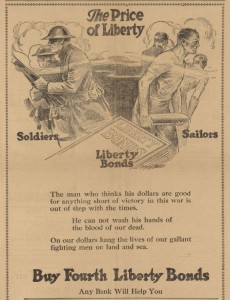
War Bond Advertisement sponsored in part by the Salem Commercial Club. Source: Oregon Historic Newspapers Database. Aurora Observer. 18 Sept. 1918.
The top issue as Salem entered 1917 was the great war in Europe. The opening line of the annual report reads: “Patriotism means cooperation.” The Salem Commercial Club assisted the U.S. Government in compiling a list of Salem-made products that was sent to Washington as part of a survey of potential war supplies. Additionally, they created the Salem Patriotic Fund, which was distributed to wives and mothers of the men of Salem’s “Company M” while they were deployed.
In the area of civic improvements, the club worked on creating the “Riverside Dip,” a public bathing beach that was created to help young kids swim in a safe area in response to a series of drownings of young children. The beach was located on the Polk County Side of the Willamette River between the railroad bridge and the Center Street bridge. Changing rooms were constructed and areas were dredged and sand placed on the shore to provide a “safer” swimming environment.[7] Additionally, the club worked to create a free campground at the Oregon State Fairgrounds to host out of town travelers to the fair and raised money to pave Fair Grounds road before the State Fair began. They also petitioned the city council to purchase street signs and conducted several surveys from a “Vacant Lot Survey” to look for unused land within the city and one to look at the business prospects of the Flax and Linen industry. The latter was seen as such a good bet, they raised $15,000 to set the 400 acres of flax that would be needed to sustain a spinning and toweling mill. They also petitioned the Committee of Indian affairs for a larger appropriation for the Chemawa Indian School, which the club described as “in bad shape.” Their campaign was successful and led to an appropriation for a new building on the campus.
The Salem Commercial Club also hosted the annual corn show and Cherry Fair and boasted at bringing a number of state wide conventions to the city including the Oregon Retail Grocers Convention, Oregon Cheese and Butter Makers Convention and the Oregon State Thresherman Convention.
Perhaps the most bizarre accomplishment claimed by the Salem Commercial Club was a brash publicity stunt that might even rival current media blitzes. The manager of the Salem Commercial Club, decided that having multiple cities named Salem across the country was confusing. So, he began to write to them and urge their city councils to give up the name Salem and allow Salem, Oregon to become the only Salem in the country. Not surprisingly, towns with long histories like Salem, Massachusetts did not acquiesce to the demands. However, press across the country picked up the story and the Salem Commercial Club claimed victory saying that the club had obtained advertising that would have cost the organization approximately $150,000 by traditional means.
Reproduced Sources.
The following are transcriptions and scans of several sources used in researching this story.
“To Push Salem’s Interests. Greater Commercial Club Organized – Officers Elected.” Oregonian. 31 Oct 1901. Pg. 4
The “Greater Salem Commercial Club” was organized this evening at a mass meeting of citizens held in the City hall. The purpose of the club is to represent the commercial interests of the city, encourage immigration and promote industrial development. Officers were elected as follows; President Henry B. Thielsen; vice-president, E.A. Pierce; secretary, N.J. Juda; treasurer, John H. Albert; executive committee, President Theilsen, W.C. Hawley, Walter Lyon, Paul Sroat and J.L. Stockton.
The executive committee will report a constitution and by-laws at a meeting to be held next Monday evening. The meeting this evening was a very harmonious one, and great enthusiasm was manifested. Addresses were made by the newly-elected officers and by Tilmon Ford, W. Merriman, H.D. Patton, E. Hofer, R.J. Hendricks and others.”
“Organization Completed. Commercial Club Adopts Constitution and By-Laws.” Oregonian. 5 Nov 1904, pg. 4.
The new Greater Salem Commercial Club met in this city tonight for the purpose of completing its organization. It adopted a constitution and by-laws. The constitution vests nearly all the power of the club in an executive committee.
The salary of the secretary is $25 a month and the membership fee is $3. All the persons, male and female, residing in the 10 Salem precincts, are eligible to membership. Much enthusiasm was manifest and the club will start at once to bring Salem to the front as a business center. The club ratified the invitation of the executive committee in inviting the Oregon Farmers’ Congress to hold its meeting in Salem. A letter was read from the secretary of the Farmers’ Congress saying that the congress would accept the invitation and would hold its meeting here from January 6 to 9, 1902.
“Salem City Council Meeting.” Daily Capital Journal. 6 Nov, 1901 pg. 4.
“The free occasional use of the police court room was granted to the Greater Salem Commercial club for its business meetings.”
“Salem commercial Club.” Oregonian. 10 Nov 1901. Pg. 7
The committee for soliciting membership to the greater Salem Commercial Club will begin work Monday, and will make an active canvass of the 10 Salem precincts. It expects to finish its work in about a week’s time. Much satisfaction is felt by the members over the progress already made by the numerous inquiries received daily by the secretary concerning the advantages for farming, milling, et., and all expressing a desire of the writers to come and engage in business of some kind.
The Commercial Clubs of the state are urging that the Salem Club unite with them for the good of the state, and this will undoubtedly be done.
“All Are Needed in the Push Club.” Daily Capital Journal. 15 Nov 1901, pg. 2
Not only all the business men are needed in the Push club to make it a success but workingmen-men who make a living at wages. These men are dependent on employment, on enterprises, on a growing city and investments of capital. They pay large sums of money for insurance and social organizations, for cigars and balls and theatres, but there could be no better investment for a man dependent on wages to make than to become an active member of the Greater Salem Commercial club and pay six bits each three months in the year to promote the legitimate growth of the city. A workingman was member of the city council of Bridgeport, Conn. He was intelligent and public-spirited in the right way. He was only an engine stoker but he has been elected Mayor of a city of wealth. The workingman has a good right to take part in this organization for the upbuilding of a city as the banker or the lawyer. He is needed and he needs the organization. If such men would take hold, the membership of the club could be made a thousand and its rallies would mean to lift Salem out of the rut of indifference and hoggishness and make it the best city in the state to live in for a workingman who wants to make a home for himself and family.
“Salem Push Club Pushing” Capital Journal. 21 Nov 1901. Page 3
Membership already large but more are needed. In order to make the organization what it should be. The Greater Salem Commercial Club Wednesday night showed up about 250 members and as many more in sight. Another meeting will be held in two weeks to complete the preliminary organization.
The best spirit prevailed and there was a determination manifest to make the order permanent and useful.
President Thielsen appointed a committee of five, on order of those present, to report a program and grand rally in the interests of Salem and Marion county in the near future. The committee are: N.J. Judah, J.H. McNary, E.A. Pierce, F.A. Wiggins and A.F. Hofer.
The five committees on the membership canvass were continued and will complete their work, when five hundred members are expected to be enrolled. The fee is so small and the disposition of the members and of the officers is to make ever cent count for actual work.
The question of a census of greater Salem was brought up and the necessity shown of having that work done once from the standpoint of the city’s real population, instead of leaving it to the whim of some employee of Polk &Co., or some census official.”
Works Cited.
[1] Annual Reports Salem Commercial club 1916-1917. Willamette Heritage Center, Daue Family Collection. WHC 0083.043.0013.006.
[2] “To Push Salem’s Interests. Greater Commercial Club Organized – Officers Elected.” Oregonian. 31 Oct 1901. Pg. 4http://oregonnews.uoregon.edu/lccn/sn83025138/1901-10-31/ed-1/seq-4/
[3] Stone, Stephen A. Dynamic Decades: The Salem Story as Seen through the history of the Salem Area Chamber of Commerce. Salem, Oregon: Salem Area Chamber of Commerce, 1965. In his rambling narrative, Stone lays out the following timeline for several organizations he associates as forerunners of the Salem Area Chamber of Commerce. It is difficult to determine if these organizations were the same or rivals, although through much of the text the latter is suggested. It appears that the Salem Board of Trade and the Salem Chamber of Commerce and the Illahee Club may have existed simultaneously. We know from the newspaper accounts (see note 2 above) that the Greater Salem Commercial Club was incorporated with individual by-laws in 1901. Stone states that a name change to Salem Commercial club occurred in 1902 (see page 5). The name Salem Commercial Club disappears from newspaper records after 1907, suggesting that the name change Stone describes did happen, or that the organization ceased. A 1913 article (“Larger Organization Favored in Report.” Daily Capital Journal. 3 June 1913, page 3. http://oregonnews.uoregon.edu/lccn/sn99063957/1913-06-03/ed-1/seq-3/) states that the Illihee club and the Board of Trade met and proposed to create a new commercial club to be called the “Salem Commercial Club.” A booklet in the Daue Collection (see 83.43.5.14) called the “Constitution and By-Laws of the Salem Commercial Club” says they were adopted June 15, 1915.
Consolidated timeline from Stone:
1884 – Salem Board of Trade Established
1890 – Salem Chamber of Commerce
1895 – Illihee Club formed
1902 – Salem Commercial Club (name change)
1909 – Name Change to Salem Board of Trade
1912 – Illahee and Board of Trade Merge to form new Commercial Club
1920 – Commercial Club becomes affiliated with National Chamber of Commerce Organization.
1922 – Salem Chamber of Commerce name adopted
[4] “All Are Needed in the Push Club.” Daily Capital Journal. 15 Nov 1901, pg. 2
http://oregonnews.uoregon.edu/lccn/sn99063956/1901-11-15/ed-1/seq-2/
[5] “Organization Completed. Commercial Club Adopts Constitution and By-Laws.” Oregonian. 5 Nov 1904, pg. 4. http://oregonnews.uoregon.edu/lccn/sn83025138/1901-11-05/ed-1/seq-4/
[6] “All Are Needed in the Push Club.” Daily Capital Journal. 15 Nov 1901, pg. 2
http://oregonnews.uoregon.edu/lccn/sn99063956/1901-11-15/ed-1/seq-2/
[7] “Salem Will Have Fine Bathing Beach.” Daily Capital Journal. 11 July 1916, pg. 2 http://oregonnews.uoregon.edu/lccn/sn99063957/1916-07-11/ed-1/seq-2/



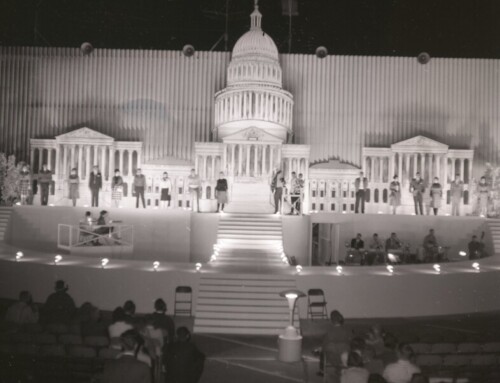
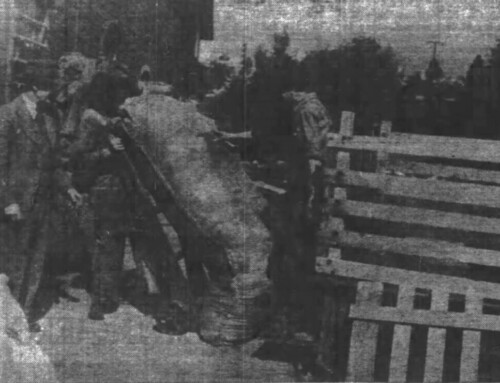
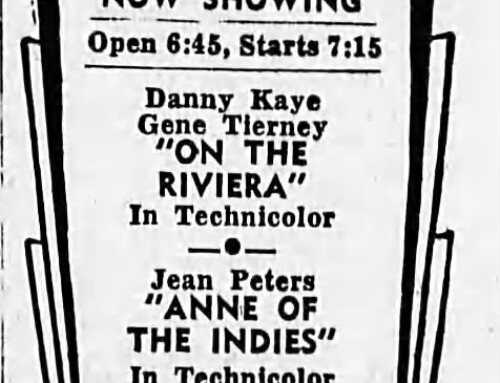
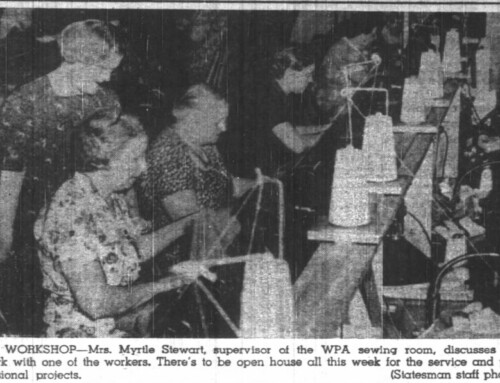
Leave A Comment